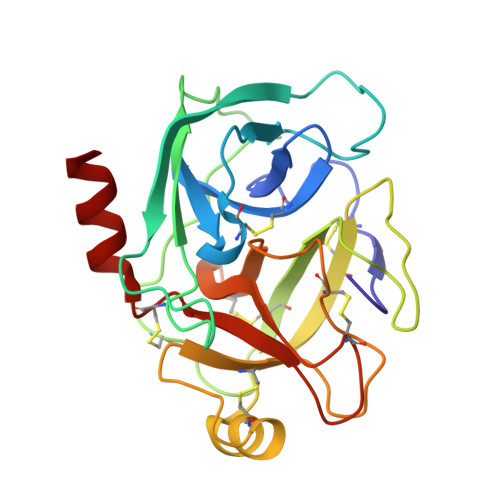Optimization of Cyclic Plasmin Inhibitors: From Benzamidines to Benzylamines.
Hinkes, S., Wuttke, A., Saupe, S.M., Ivanova, T., Wagner, S., Knorlein, A., Heine, A., Klebe, G., Steinmetzer, T.(2016) J Med Chem 59: 6370-6386
- PubMed: 27280436
- DOI: https://doi.org/10.1021/acs.jmedchem.6b00606
- Primary Citation of Related Structures:
5EG4 - PubMed Abstract:
New macrocyclic plasmin inhibitors based on our previously optimized P2-P3 core segment have been developed. In the first series, the P4 residue was modified, whereas the 4-amidinobenzylamide in P1 position was maintained. The originally used P4 benzylsulfonyl residue could be replaced by various sulfonyl- or urethane-like protecting groups. In the second series, the P1 benzamidine was modified and a strong potency and excellent selectivity was retained by incorporation of p-xylenediamine. Several analogues inhibit plasmin in the subnanomolar range, and their potency against related trypsin-like serine proteases including trypsin itself could be further reduced. Selected derivatives have been tested in a plasma fibrinolysis assay and are more effective than the reference inhibitor aprotinin. The crystal structure of one inhibitor was determined in complex with trypsin. The binding mode reveals a sterical clash of the inhibitor's linker segment with the 99-hairpin loop of trypsin, which is absent in plasmin.
Organizational Affiliation:
Department of Pharmacy, Institute of Pharmaceutical Chemistry, Philipps University Marburg , Marbacher Weg 6, D-35032 Marburg, Germany.


















